Hanoi is home to many long-standing eateries that have remained popular through the years. Their appeal lies not only in their unique cooking secrets but also in the treasured heirlooms that help define the identity of each establishment.
VietNamNet presents a special series titled Ancient treasures of Hanoi’s time-honored eateries.
A Michelin-selected banh cuon shop nearly 40 years in the making
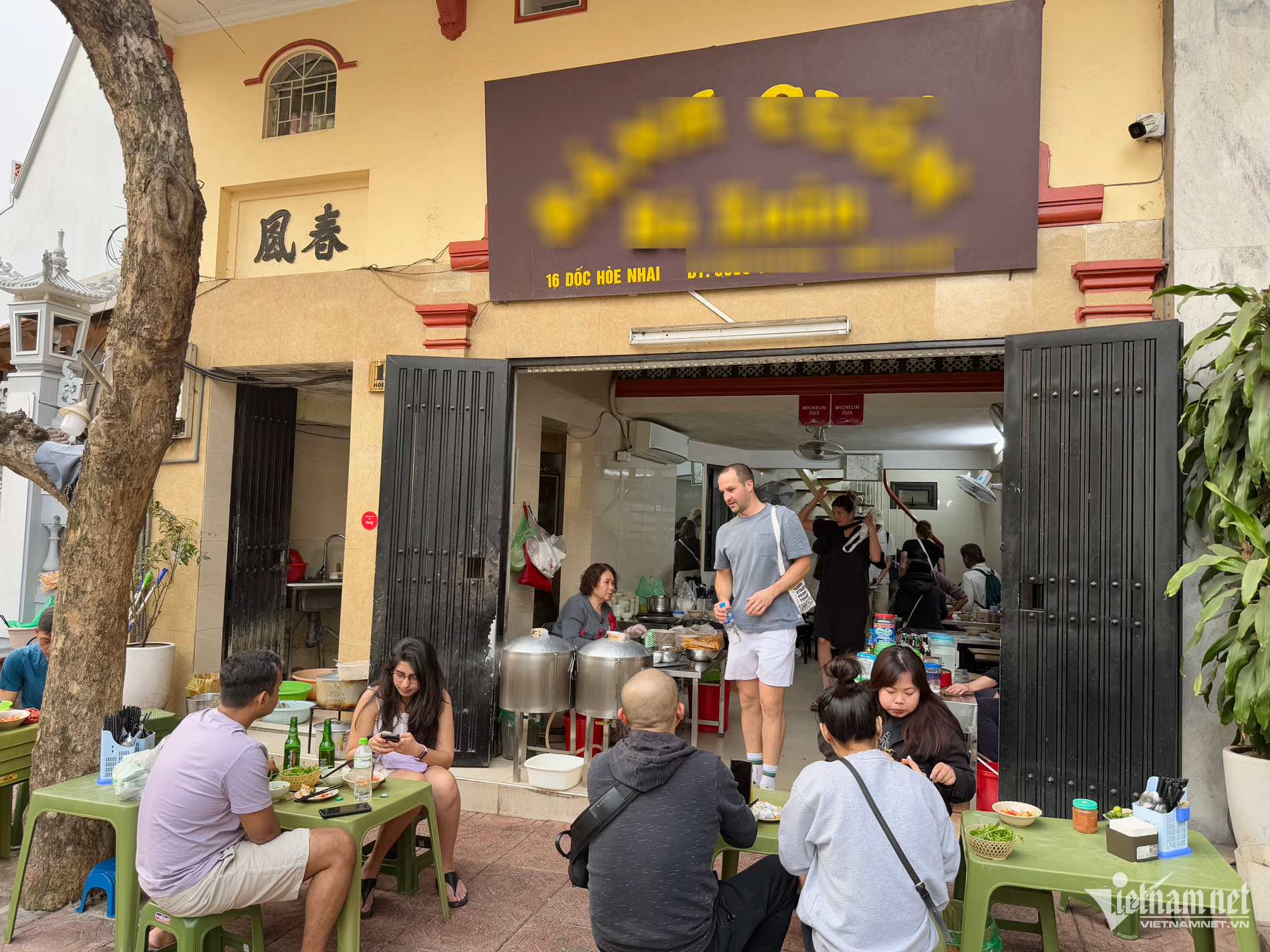
The family-run Mrs. Xuan banh cuon shop is a favorite among locals and international visitors exploring Hanoi.
For nearly 40 years, a renowned family-run banh cuon (steamed rice rolls) shop in Hanoi has kept its traditional method of grinding rice flour using a century-old stone mill. This technique ensures the dish has a uniquely chewy and fragrant texture, attracting both Vietnamese and foreign diners.
Nestled on the slope of Hoe Nhai Street in Ba Dinh District, the family-owned banh cuon shop named after Madame Xuan has operated for nearly four decades, opening twice daily in the morning and late afternoon.
The original owners, Bui Huu Xuan and his wife Nguyen Thi Bac, started the eatery together. At that time, it was common for married women to be referred to by their husband's name, hence the name “Mrs. Xuan.”
Originally, Mr. Xuan’s family specialized in making noodle strands. After marrying, the couple shifted to producing pho noodles and banh cuon, gradually establishing the eatery that has now lasted nearly 40 years.
Today, the two daughters of the original owners alternate shifts, handling the morning and evening operations and continuing the family’s legacy by making the banh cuon themselves.
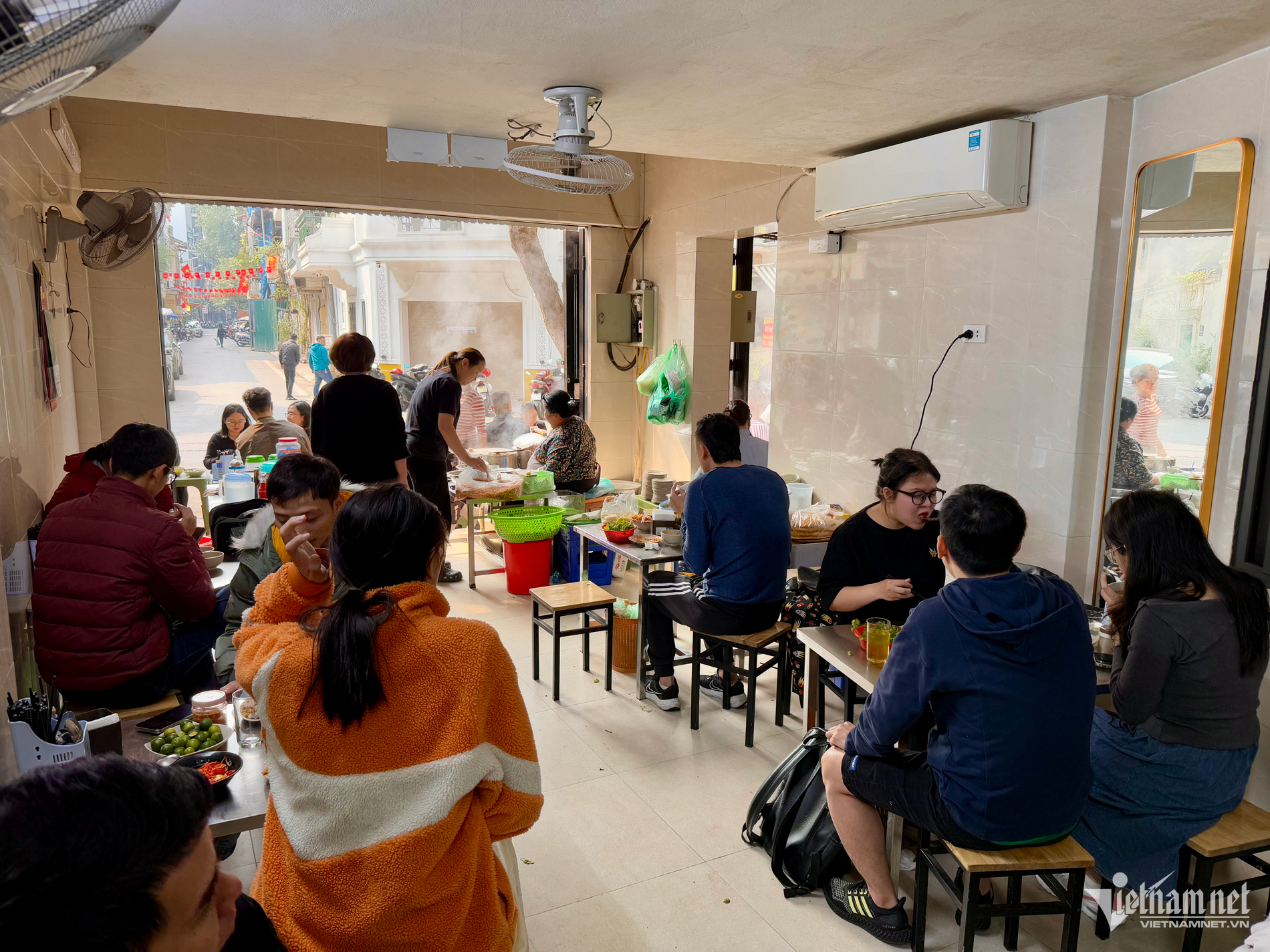
Mrs. Xuan’s daughters now manage the shop, alternating morning and evening shifts.
“The banh cuon shop has been running since my parents’ time, nearly 40 years ago, but my sister and I only took over about 20 years ago,” shared Bui Thi Kim Lan, a family representative, in an interview with VietNamNet.
According to Lan, the shop has maintained its original recipe all these years. The only new addition in recent times is the inclusion of egg-filled banh cuon to meet a broader range of customer preferences.
In 2023, the Madame Xuan family eatery was selected for the Michelin guide’s “Michelin Selected” list. Since then, in addition to its loyal patrons, the shop has seen an influx of new diners, including many international tourists.
The secret behind exceptional banh cuon
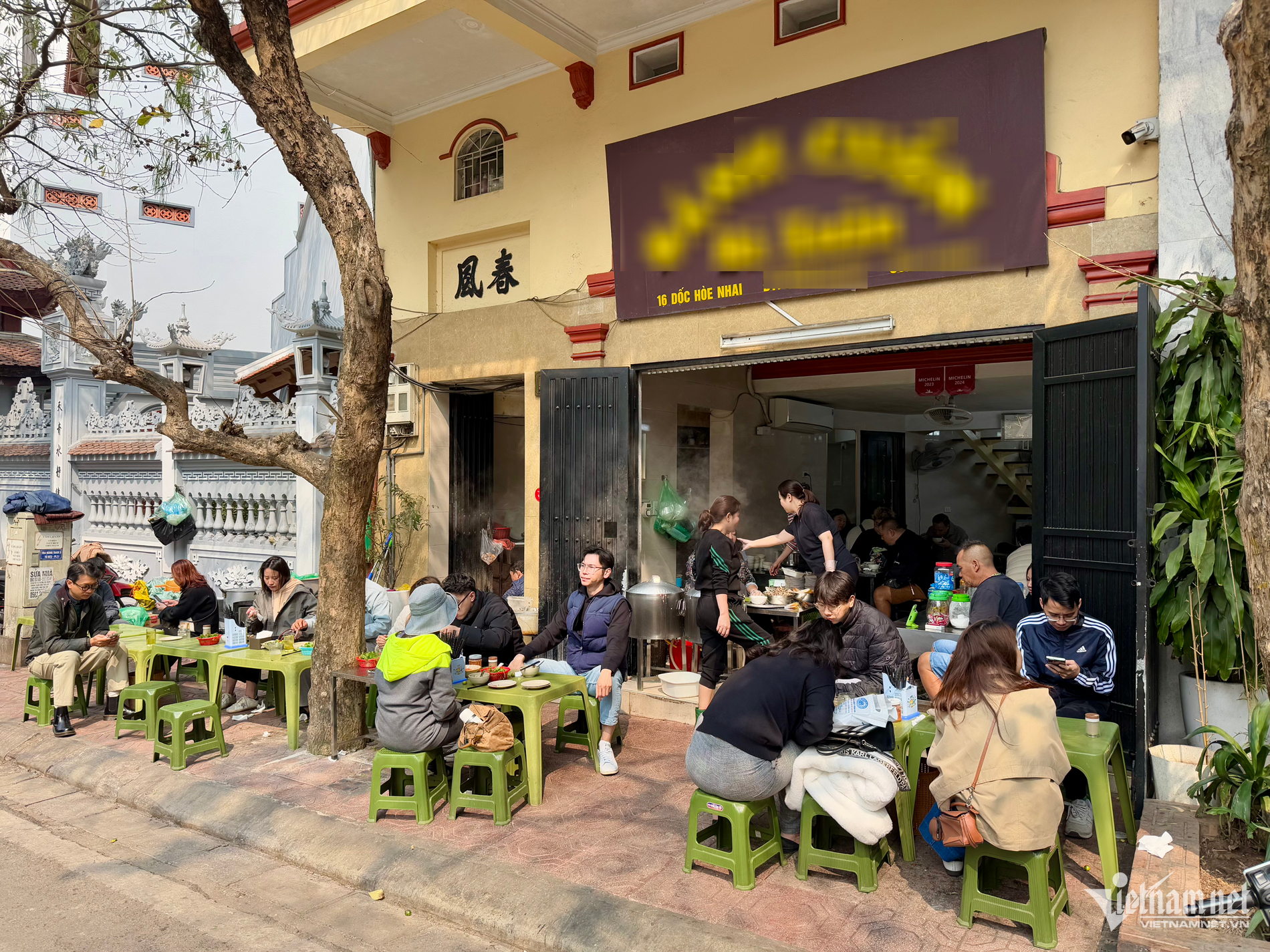
The shop operates daily from 6 AM to 1 PM and 4 PM until late evening.
Unlike many other traditional banh cuon eateries in Hanoi, which now rely on modern equipment, Madame Xuan’s shop still grinds its rice flour by hand using a traditional stone mill handed down through generations.
Lan explained that the stone mill, estimated to be around 100 years old, was originally used by her grandfather for making noodle flour. It was later passed to her parents and remains in use by the current generation.
Over time, the mill has become slightly misaligned on one side, yet it still functions well. The Lan family considers it a treasured heirloom and takes great care to preserve it.
“Although hand-grinding the flour with a stone mill is more labor-intensive and time-consuming, it produces flour with just the right texture. This ensures the banh cuon is thin, smooth, soft, and elastic without being mushy or falling apart,” Lan said.
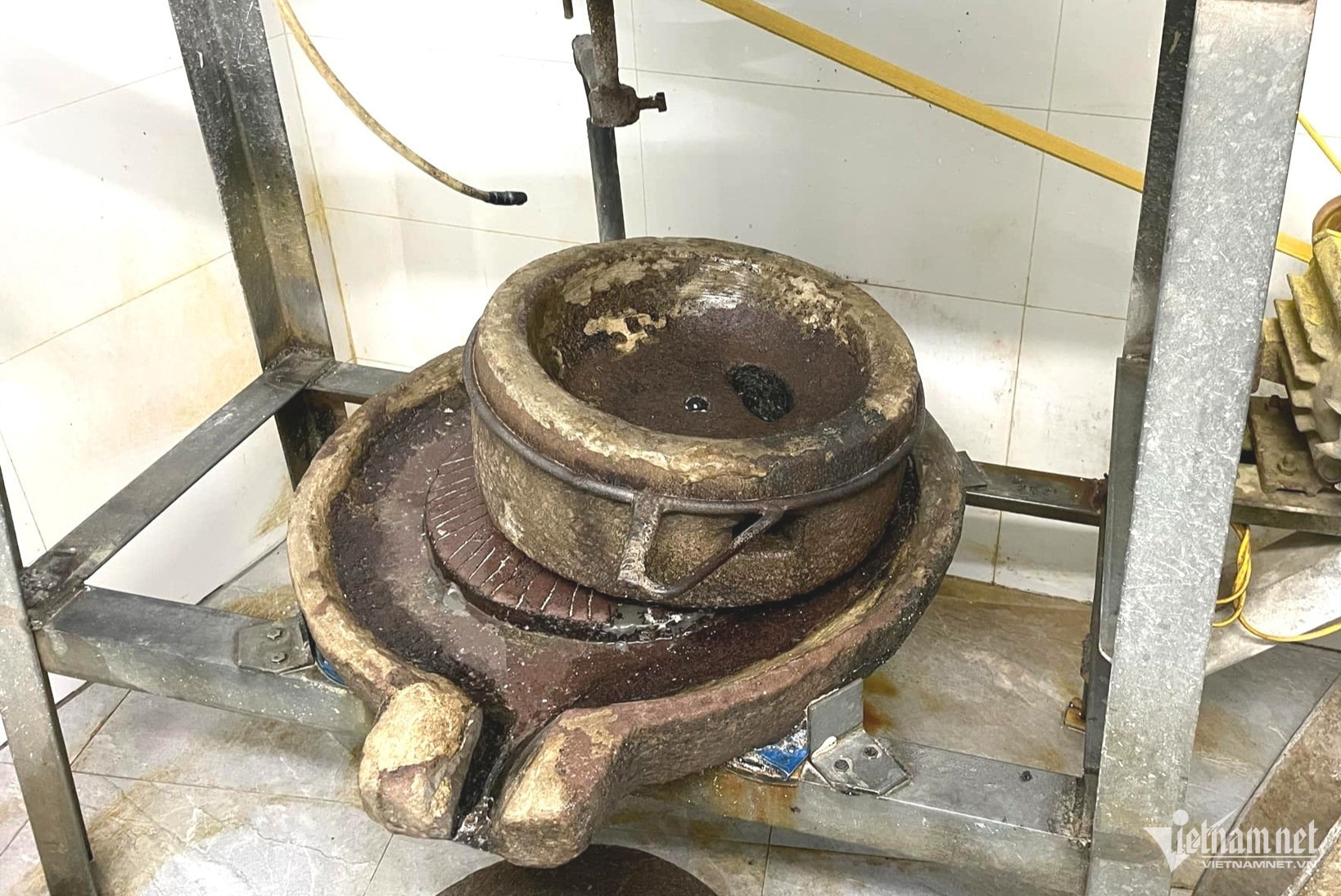
The century-old stone mill has been in the Lan family for generations.
The woman also shared that beyond their traditional flour-grinding method, the secret to the shop’s delicious banh cuon lies in the meticulous selection and preparation of ingredients.
The rice used must be fresh and of high quality, sourced specifically from Cao Bang Province. The cha (Vietnamese pork sausage) served alongside comes from the well-known Uoc Le village. Fresh herbs are supplied by trusted farmers in the suburban areas.
The dipping sauce, a highlight of the meal, is a balanced blend of fish sauce, pepper, chili powder, garlic vinegar, kumquat, and other ingredients. Thanks to a family-secret formula, the sauce is fragrant and flavorful, appealing to a wide range of palates.
The shop serves two main varieties of banh cuon: one filled with minced pork and wood ear mushrooms, and the other with egg. Both are accompanied by fried cha, cinnamon-flavored cha, and herbs, topped with homemade crispy fried shallots.
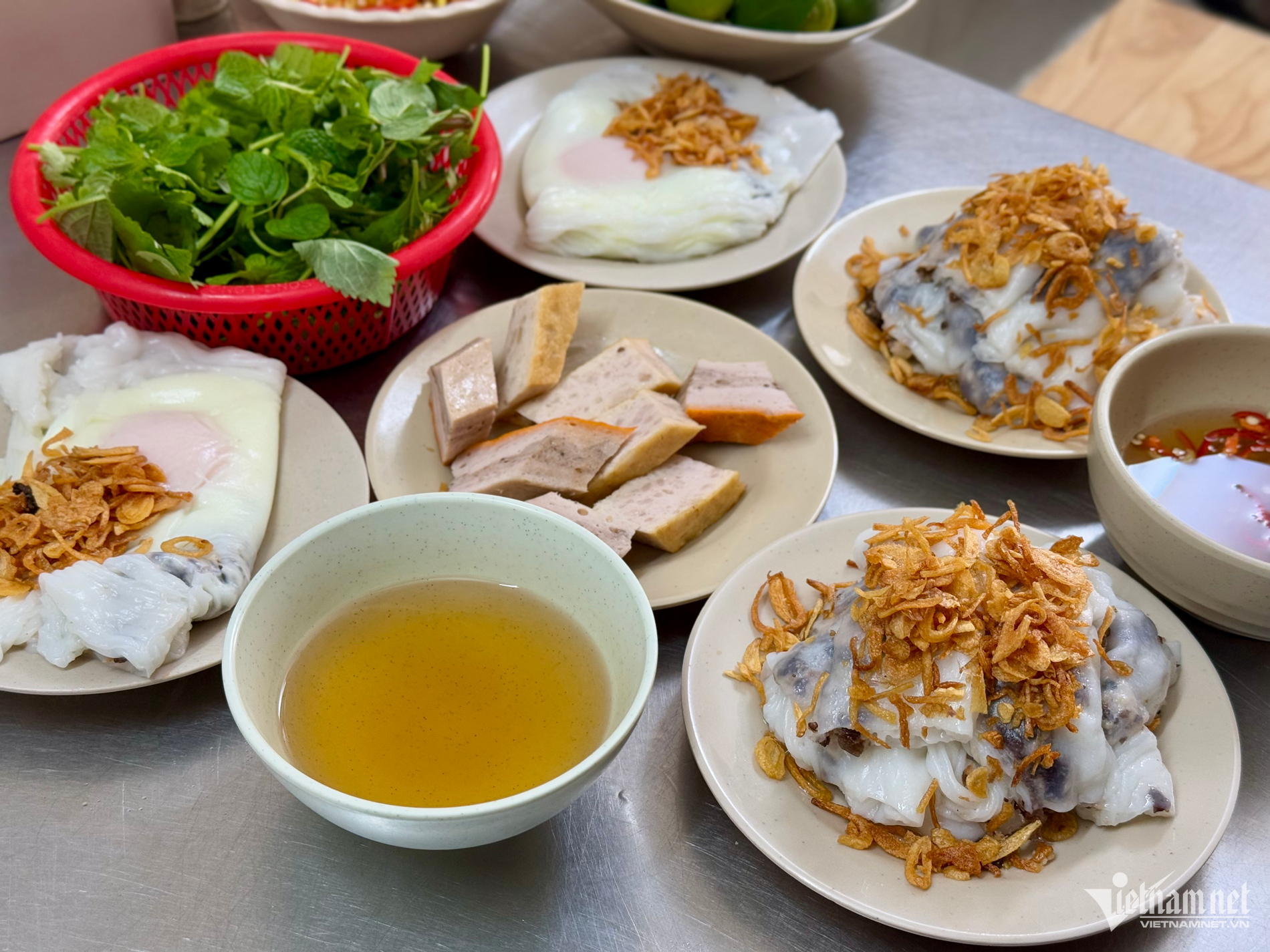
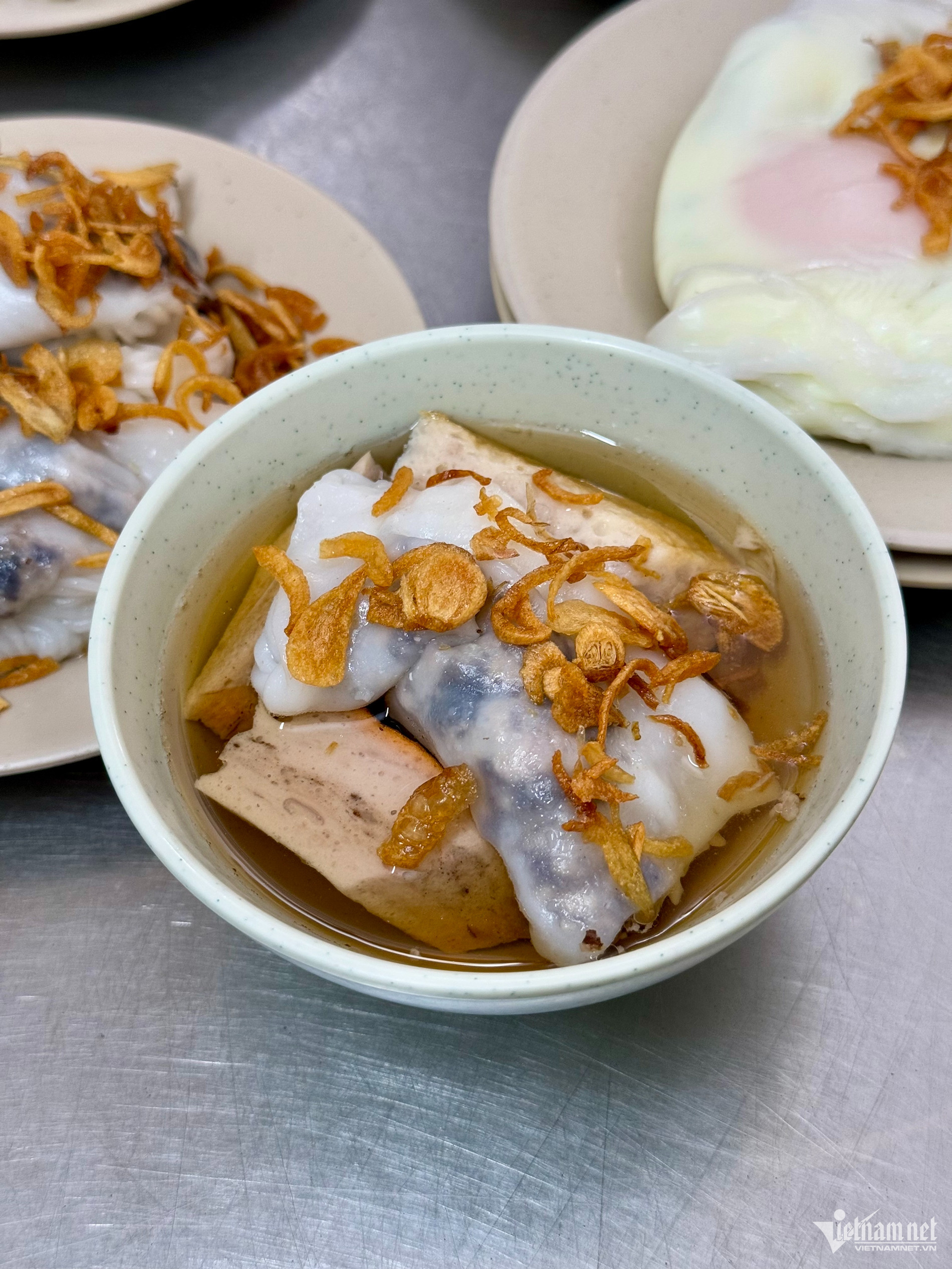
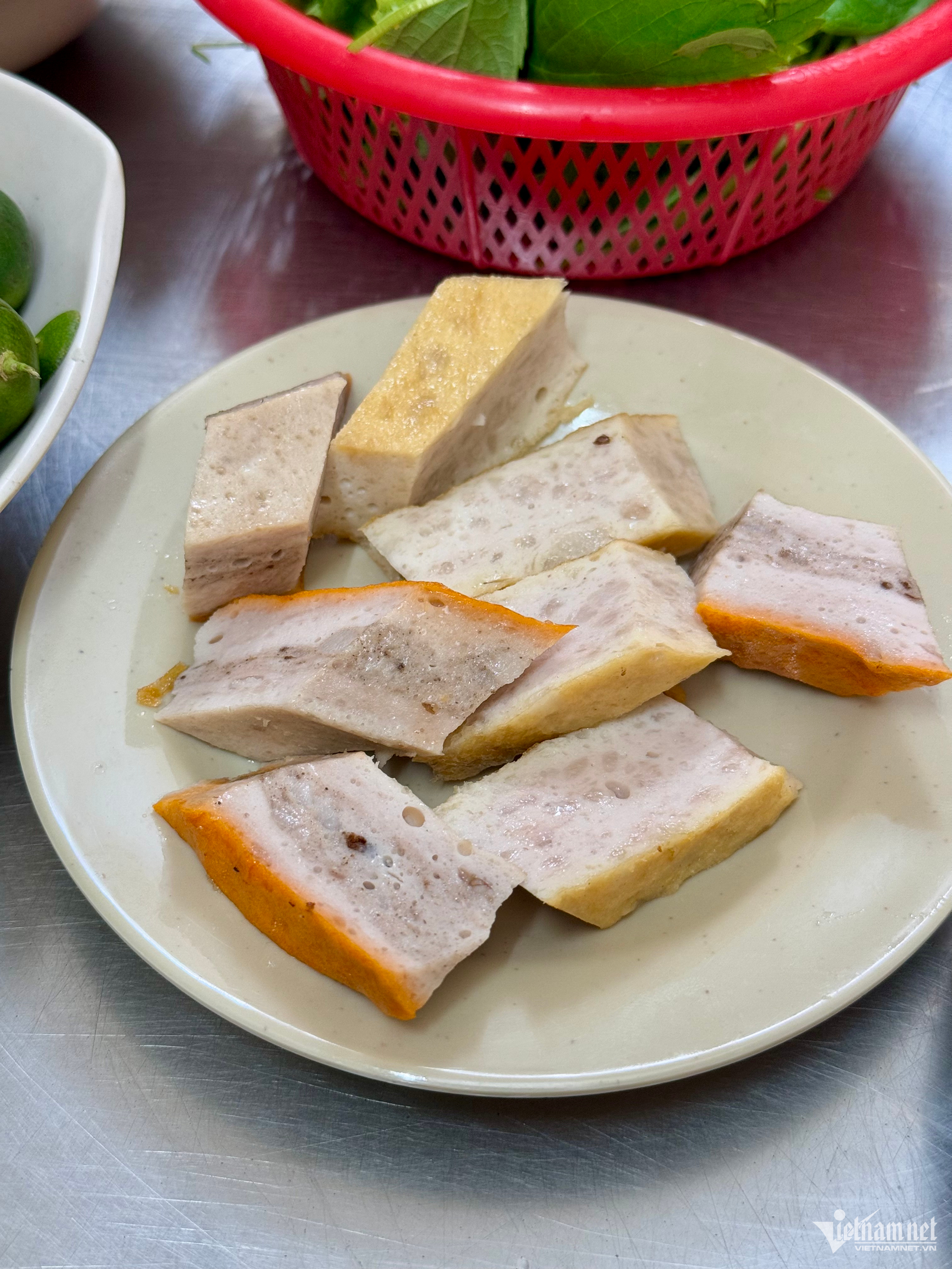
Each order is made fresh. Only when a customer places an order does Lan begin steaming the thin rice batter using a cloth stretched over a boiling pot.
With just a few simple tools and two constantly steaming pots, the owner expertly ladles batter onto the cloth, spreads it thinly, and covers it with a lid.
After a few minutes, the steamed sheet puffs up. Using a thin bamboo stick, she swiftly removes the cooked layer, fills it with a mixture of minced pork and mushrooms, then rolls it neatly.
The final product is a soft, elastic rice roll tightly wrapped around the filling. Each roll is cut in half and garnished with golden, fragrant fried shallots.

The shop continues to use the traditional stone mill for grinding rice flour.
In addition to the minced pork filling, the shop’s egg-filled banh cuon is also a favorite. The egg is steamed until about 70% cooked, so when diners cut into it, the yolk gently oozes out, offering a rich, creamy flavor without being overpowering.
Nguyen Tran Phong Vu, a Hanoi local from Hai Ba Trung District, has visited the eatery several times. He praised the dish for its fragrant aroma, the natural sweetness of the rice, the rich, savory pork filling, and the slight crunch of the mushrooms.
“The dipping sauce perfectly balances sour, spicy, salty, and sweet flavors. Paired with the fragrant, crispy fried shallots, it’s so good that you immediately want a second serving,” he said.
Thao Trinh